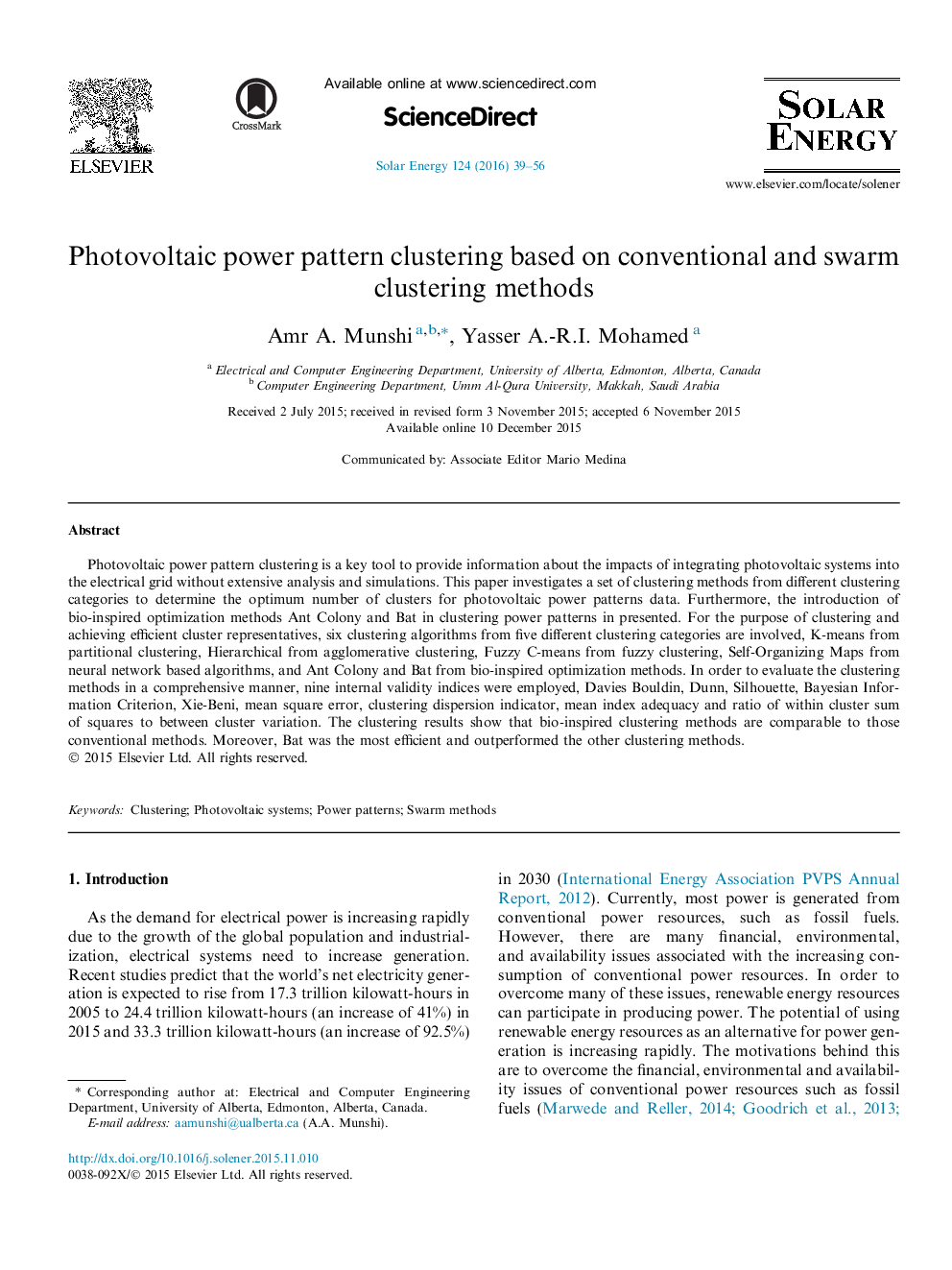| Article ID | Journal | Published Year | Pages | File Type |
|---|---|---|---|---|
| 1549437 | Solar Energy | 2016 | 18 Pages |
•The application of swarm methods to cluster photovoltaic power patterns is presented.•A systematic determination of the optimum number of clusters is proposed.•The WCBCR validity index is efficient in evaluating the clustering results.•The Bat clustering algorithm presented the best results.
Photovoltaic power pattern clustering is a key tool to provide information about the impacts of integrating photovoltaic systems into the electrical grid without extensive analysis and simulations. This paper investigates a set of clustering methods from different clustering categories to determine the optimum number of clusters for photovoltaic power patterns data. Furthermore, the introduction of bio-inspired optimization methods Ant Colony and Bat in clustering power patterns in presented. For the purpose of clustering and achieving efficient cluster representatives, six clustering algorithms from five different clustering categories are involved, K-means from partitional clustering, Hierarchical from agglomerative clustering, Fuzzy C-means from fuzzy clustering, Self-Organizing Maps from neural network based algorithms, and Ant Colony and Bat from bio-inspired optimization methods. In order to evaluate the clustering methods in a comprehensive manner, nine internal validity indices were employed, Davies Bouldin, Dunn, Silhouette, Bayesian Information Criterion, Xie-Beni, mean square error, clustering dispersion indicator, mean index adequacy and ratio of within cluster sum of squares to between cluster variation. The clustering results show that bio-inspired clustering methods are comparable to those conventional methods. Moreover, Bat was the most efficient and outperformed the other clustering methods.
